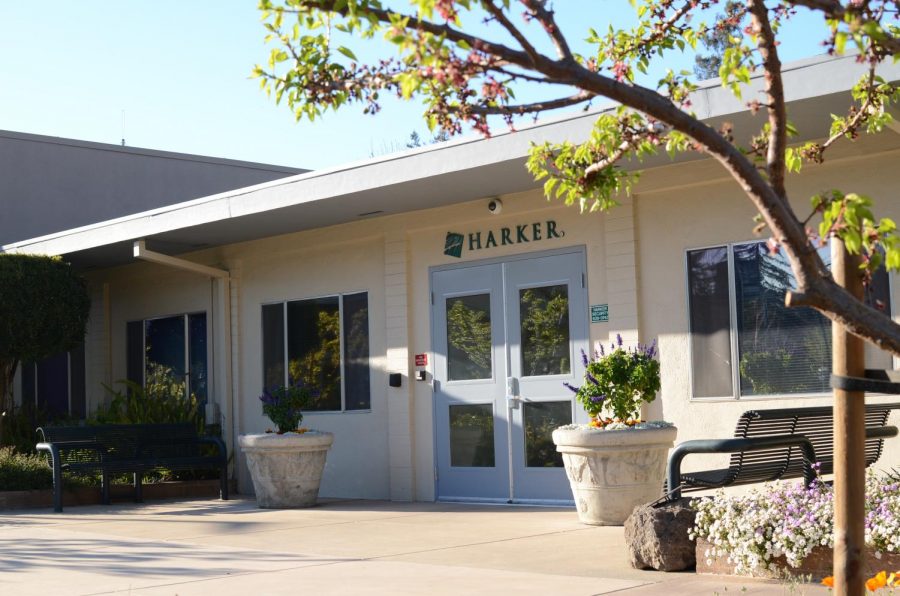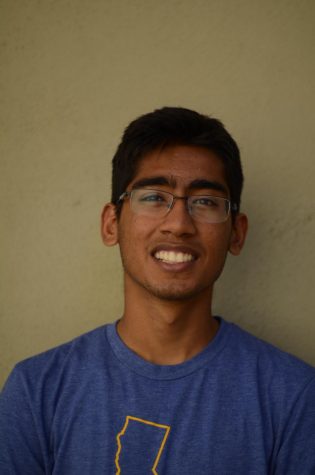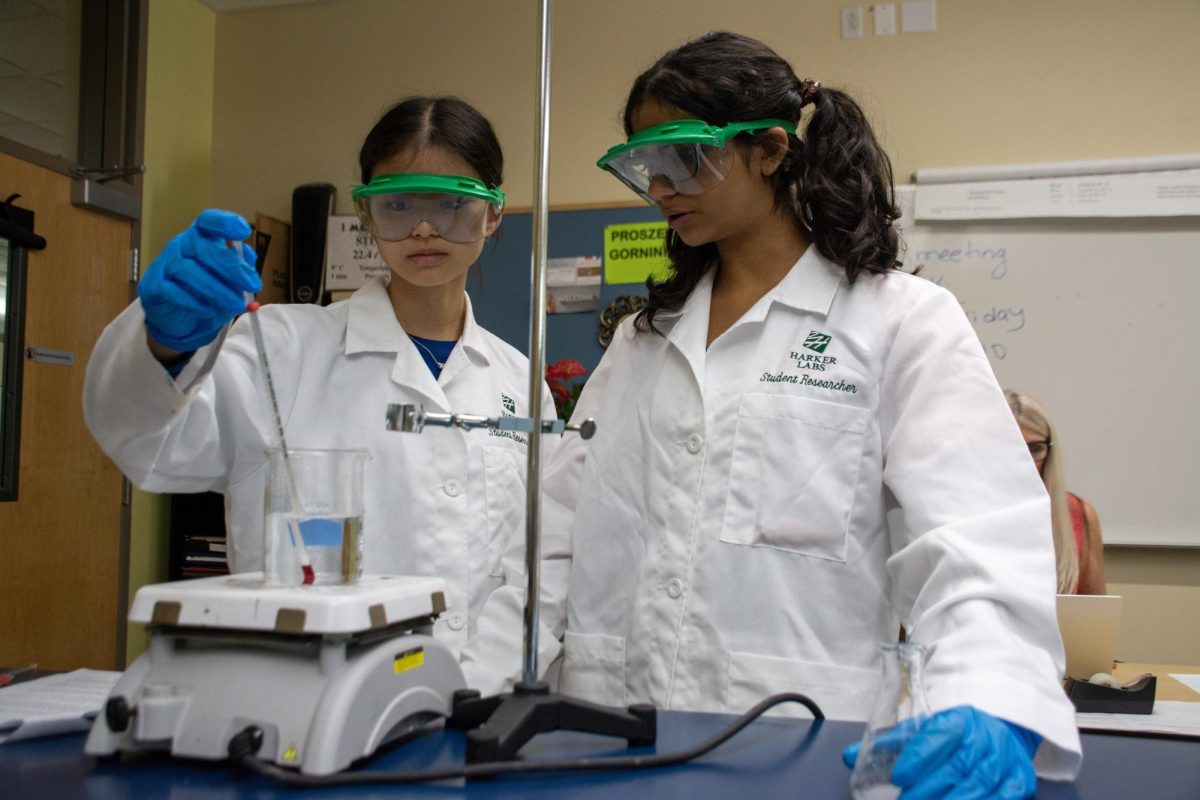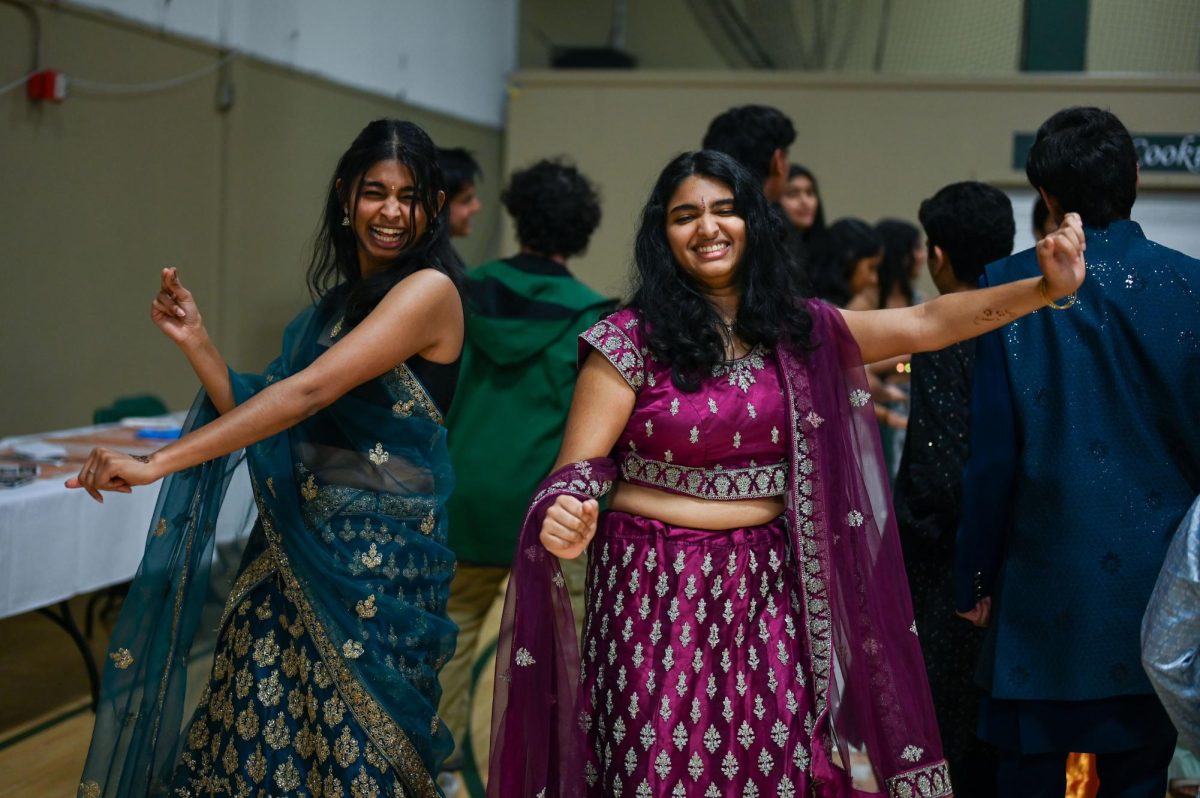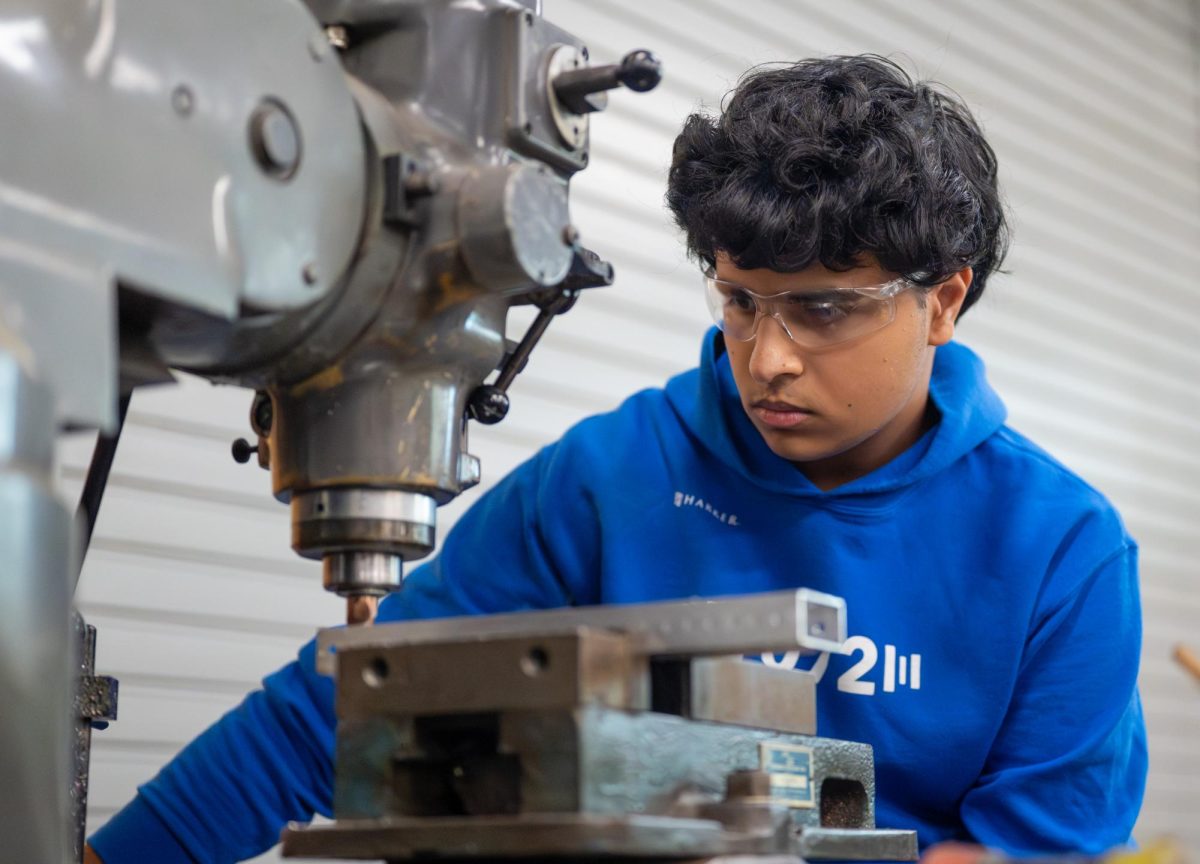Harker considers gradual transition into in-person activities as county restrictions loosen
Academic program likely to stay remote through first semester
The front office at the upper school on March 12, the day students were sent home. The administration has also enacted several key safety changes to prepare for the possibility of in-person activities, including installing hospital-grade HVAC systems across all four campuses, creating outdoor hand-washing stations, having an increased janitorial presence and providing masks for those who forget them.
September 14, 2020
As Santa Clara County loosens coronavirus restrictions with declining case counts, the Harker administration is considering resuming certain activities by the end of September as part of a phased shift to an in-person program.
California recently began tracking coronavirus case numbers through a four-tier ranking system for counties based on two metrics: an adjusted case count per 100,000 individuals and the positivity test rate. Last Tuesday, Santa Clara County was moved from Tier 1, the most restrictive, to Tier 2; if the county can maintain this designation for 14 days, schools will be permitted to resume in-person learning with certain restrictions.
“We’re not just going to do what we’re allowed to do by the county. We need to think about making sure we have as safe and healthy an environment as possible for our students and our staff,” head of school Brian Yager said in an interview with Harker Aquila. “Even if this county is off of the watch list, there are still a lot of folks who are understandably anxious about the safety of being in with students in class.”
The upper school began offering after-school outdoor fitness programs in stable cohorts of 12 students each last Tuesday, currently the only in-person option for students. According to Yager, other extracurricular activities that require in-person interaction — such as robotics, performing arts and certain community service clubs — may be allowed to resume on-campus as early as Sept. 29. It remains unclear whether county guidelines will allow students to participate in more than one activity.
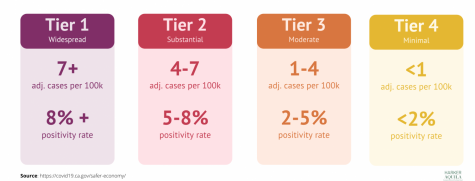
The next phase, currently planned for Oct. 19, will involve providing optional on-campus spaces for students to conduct remote learning activities in well-ventilated areas such as Nichols Atrium and the Zhang Gymnasium, as well as outdoors in the quad and orchard. If that dynamic works smoothly, Yager says, the administration may consider bringing a very limited amount of academic activities — such as labs for science classes — back on campus in November.
“We’re planning on everything staying remote for the academic program the entire first semester,” Yager said. “Things have been changing so rapidly, both in the climate around us of COVID as well as the governmental regulations, [so] it feels like any planning we do becomes obsolete within a couple of weeks. We have to be cautious of trying to plan too far down the road.”
To make these pivotal decisions, the administration is examining several key metrics, including positivity rates and new case averages in both Santa Clara and surrounding Bay Area counties, although no specific numerical thresholds have been set. Another important factor is the presence of readily available testing and contact tracing measures in the case of a positive test.
“Those protocols are predicated on access to COVID tests and results within 24 hours,” Yager said. “We need to have that level of confidence in the medical apparatus around us, which as of a week ago, we didn’t.”
The administration has also enacted several key safety changes to prepare for the possibility of in-person activities, including installing hospital-grade HVAC systems across all four campuses, creating outdoor hand-washing stations, having an increased janitorial presence and providing masks for those who forget them. Lunch will be delivered as boxed food, distributed to minimize lines and consumed entirely outdoors with increased table space in the quad and orchard.
Even as in-person aspects of school resume, the administration remains mindful of students and faculty who feel uncomfortable given the inherent risk. Students staying at home will continue to have access to content, and accommodations will be made for teachers who do not feel comfortable teaching in a classroom setting.
“We need to be at a place where not only do we have a safe program, but we also have teachers who are comfortable working in that program. We can only make so many accommodations before it becomes illogical to be open,” Yager said. “We have to work through the discomfort that people might feel and find ways to do that productively.”
Unless required by the county, Harker does not plan on implementing an alternating or limited attendance model for the upper school because of the logistical complexity involved. While on campus, students will be expected to maintain appropriate distance during non-class periods and comply with safety regulations including mask usage.
“If we see people not respecting those expectations, there’s going to be consequences. What they are will vary, but if it’s repeated, those students may be asked to stay home,” Yager said. “But that said, we’re not wasting a lot of energy thinking about it, because we know our students are going to want to be on site.”
Tentative plans are also in place for the middle school campus — which will essentially follow the upper school model with a lag of a few weeks — and the lower school and preschool campuses, which have to adhere to different restrictions while maintaining stable cohorts. With an uncertain future, however, the school remains focused on the current remote program.
“I’m really proud of our teachers and administrators for putting the program together that we have,” Yager said. “I think everyone would prefer, from an educational standpoint as well as just emotional one, to be on campus with students and faculty interacting with each other. [But] we want to be patient and do it right and, and serve our students to the highest degree possible.”

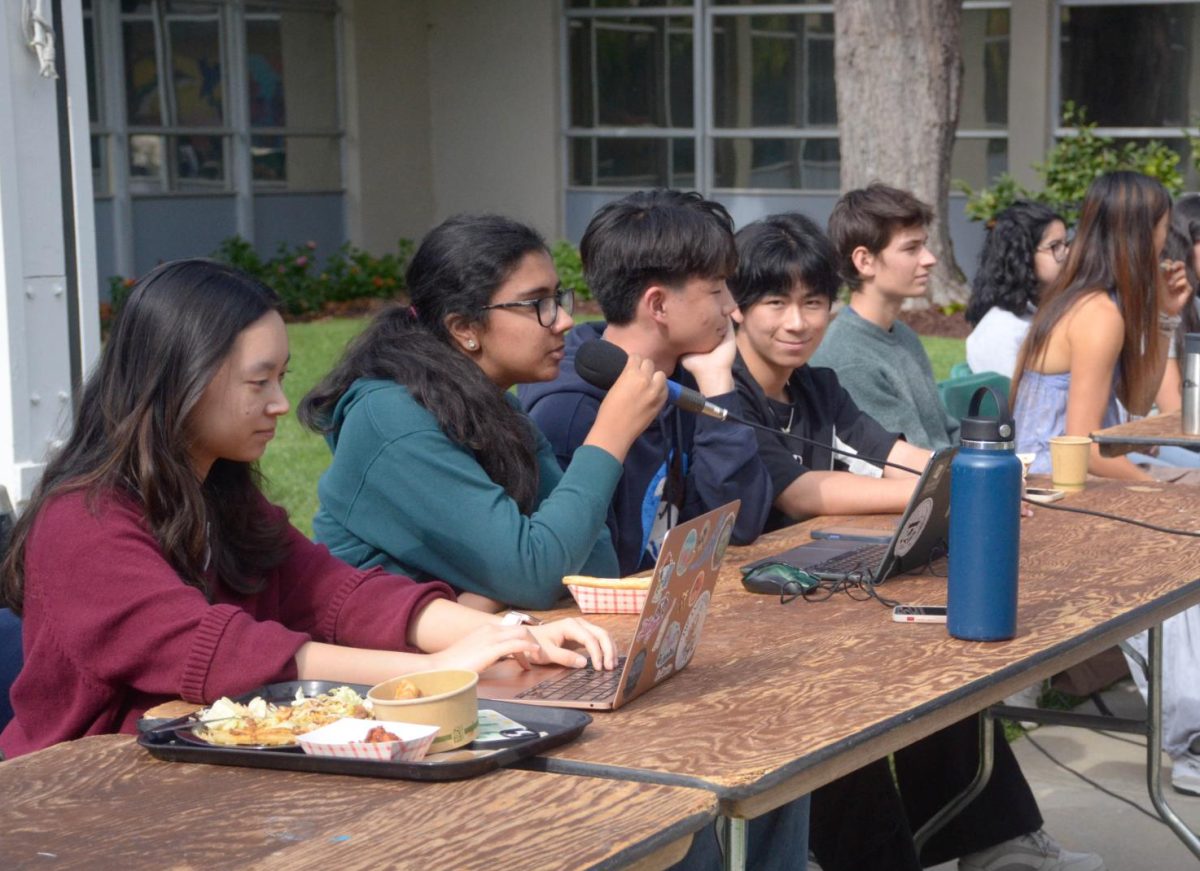
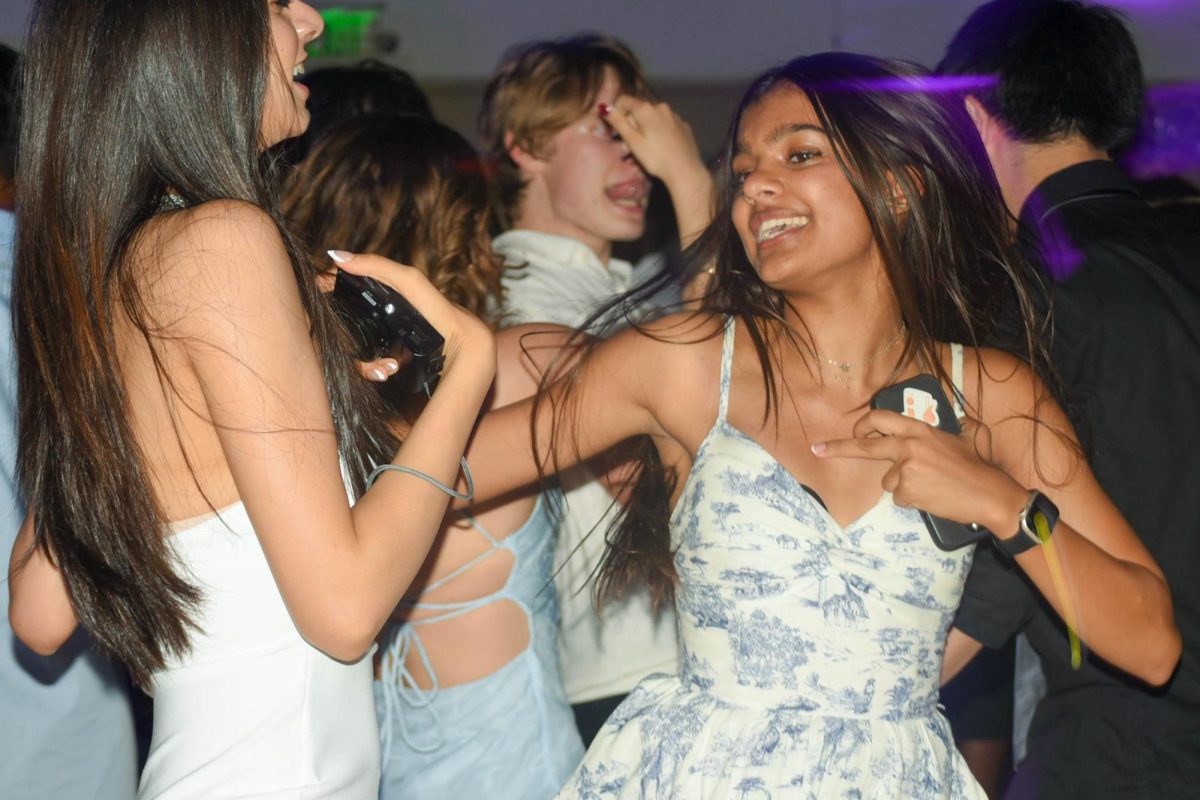
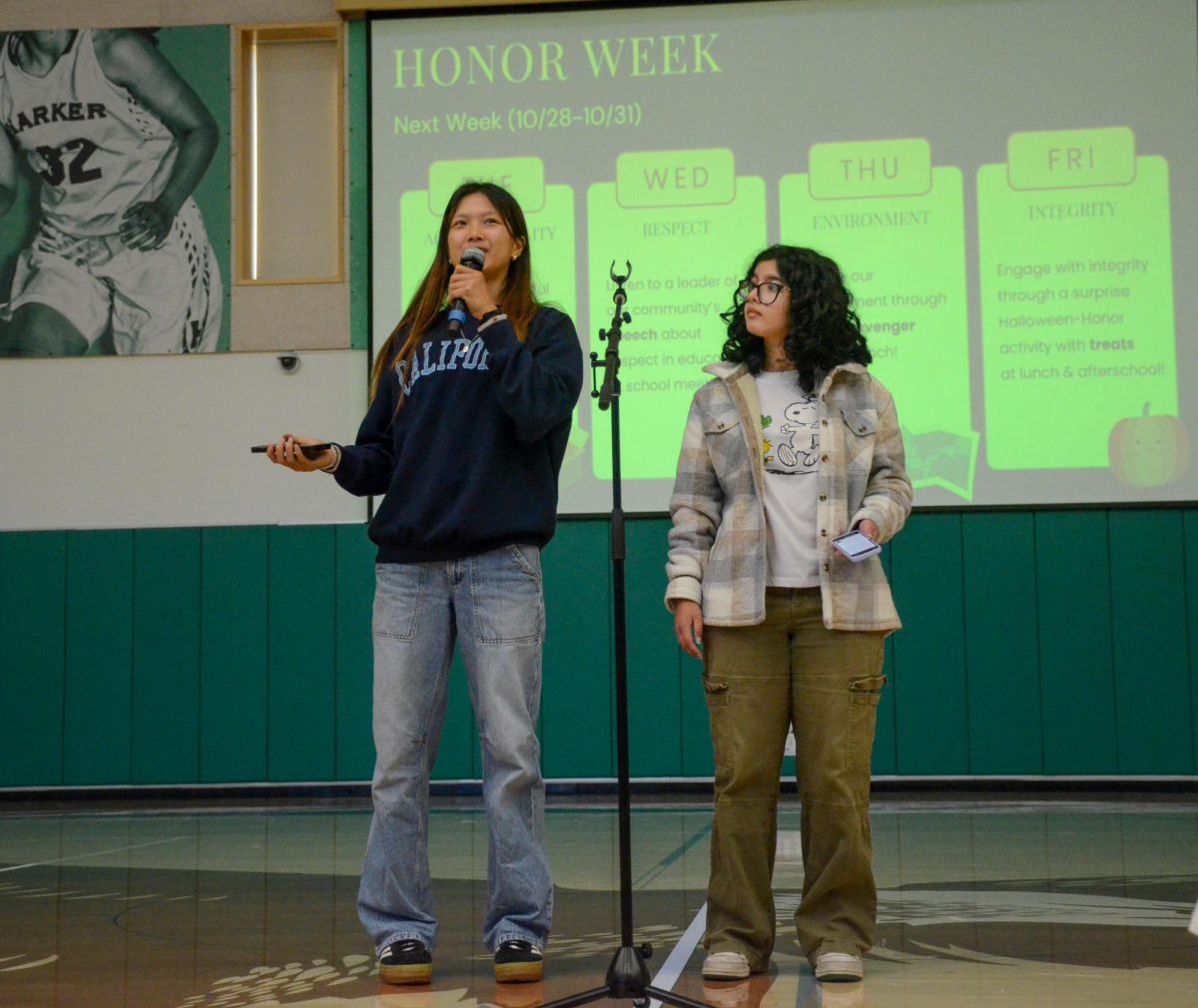
![LALC Vice President of External Affairs Raeanne Li (11) explains the International Phonetic Alphabet to attendees. "We decided to have more fun topics this year instead of just talking about the same things every year so our older members can also [enjoy],” Raeanne said.](https://harkeraquila.com/wp-content/uploads/2025/10/DSC_4627-1200x795.jpg)
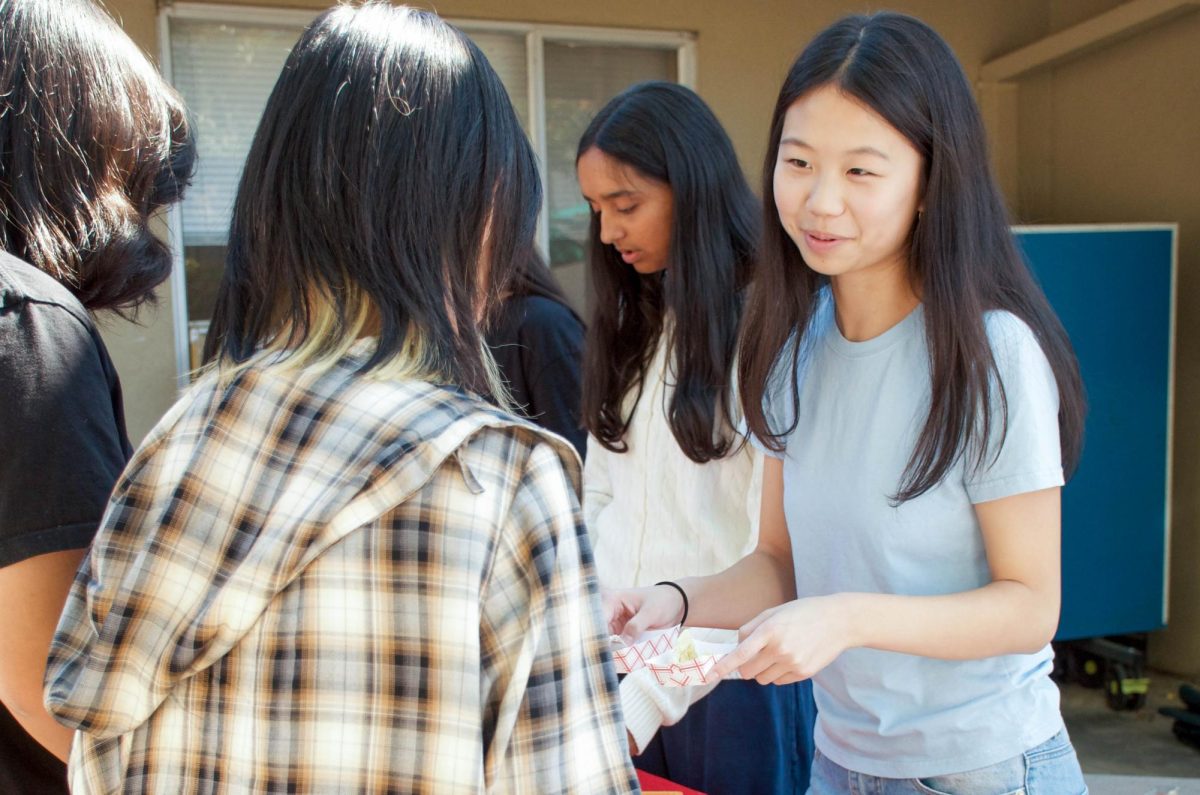

















![“[Building nerf blasters] became this outlet of creativity for me that hasn't been matched by anything else. The process [of] making a build complete to your desire is such a painstakingly difficult process, but I've had to learn from [the skills needed from] soldering to proper painting. There's so many different options for everything, if you think about it, it exists. The best part is [that] if it doesn't exist, you can build it yourself," Ishaan Parate said.](https://harkeraquila.com/wp-content/uploads/2022/08/DSC_8149-900x604.jpg)




![“When I came into high school, I was ready to be a follower. But DECA was a game changer for me. It helped me overcome my fear of public speaking, and it's played such a major role in who I've become today. To be able to successfully lead a chapter of 150 students, an officer team and be one of the upperclassmen I once really admired is something I'm [really] proud of,” Anvitha Tummala ('21) said.](https://harkeraquila.com/wp-content/uploads/2021/07/Screen-Shot-2021-07-25-at-9.50.05-AM-900x594.png)







![“I think getting up in the morning and having a sense of purpose [is exciting]. I think without a certain amount of drive, life is kind of obsolete and mundane, and I think having that every single day is what makes each day unique and kind of makes life exciting,” Neymika Jain (12) said.](https://harkeraquila.com/wp-content/uploads/2017/06/Screen-Shot-2017-06-03-at-4.54.16-PM.png)








![“My slogan is ‘slow feet, don’t eat, and I’m hungry.’ You need to run fast to get where you are–you aren't going to get those championships if you aren't fast,” Angel Cervantes (12) said. “I want to do well in school on my tests and in track and win championships for my team. I live by that, [and] I can do that anywhere: in the classroom or on the field.”](https://harkeraquila.com/wp-content/uploads/2018/06/DSC5146-900x601.jpg)
![“[Volleyball has] taught me how to fall correctly, and another thing it taught is that you don’t have to be the best at something to be good at it. If you just hit the ball in a smart way, then it still scores points and you’re good at it. You could be a background player and still make a much bigger impact on the team than you would think,” Anya Gert (’20) said.](https://harkeraquila.com/wp-content/uploads/2020/06/AnnaGert_JinTuan_HoHPhotoEdited-600x900.jpeg)

![“I'm not nearly there yet, but [my confidence has] definitely been getting better since I was pretty shy and timid coming into Harker my freshman year. I know that there's a lot of people that are really confident in what they do, and I really admire them. Everyone's so driven and that has really pushed me to kind of try to find my own place in high school and be more confident,” Alyssa Huang (’20) said.](https://harkeraquila.com/wp-content/uploads/2020/06/AlyssaHuang_EmilyChen_HoHPhoto-900x749.jpeg)



